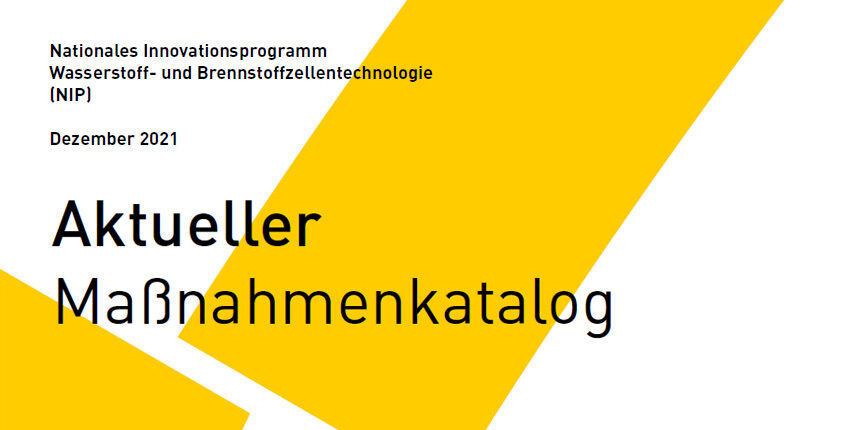The NOW Advisory Board Chairman outlines the hydrogen and fuel cell industry’s wishes for the further development of the National Innovation Programme Hydrogen and Fuel Cell Technology (NIP) to the National Hydrogen Council.
The representatives of industry and science on the NOW GmbH Advisory Board for the hydrogen and fuel cell sector have formulated a paper detailing their ideas for the goals and priorities of the National Innovation Programme Hydrogen and Fuel Cell Technology (NIP) up to the year 2026. Dr Oliver Weinmann, Chairman of the Advisory Board, presented the so-called NIP Catalogue of Measures to the National Hydrogen Council today. In Measure 6, the National Hydrogen Strategy explicitly expresses its commitment to the continuation of funding within the framework of the NIP.
The industry anticipates funding requirements totalling more than 3.7 billion euros for fuel cell and hydrogen technology. This includes research and development measures as well as support for launching products and for the supplier industry in expanding production capacities. Funding for research, development and demonstration activities is considered to require about 1.6 billion euros up to and including 2026; funding for market activation measures is estimated at about 2.1 billion euros.
Kurt Christoph von Knobelsdorff, Managing Director of NOW GmbH, in whose Advisory Board the industry and science representatives have revised the catalogue of measures: “The further development of the funding priorities in the NIP reflects changed political framework conditions. It is a necessary response to changes brought about by the National Hydrogen Strategy as well as to new EU requirements such as the Alternative Fuels Infrastructure Directive (AFID) or the Clean Vehicles Directive (CVD).”
Dr Oliver Weinmann, Chairman of the NOW Advisory Board / Vattenfall GmbH: “With new priorities in the focus of research & development funding, and by emphasising commercial vehicles, trains or ships in market activation or by expanding international partnerships, we want to bring hydrogen and fuel cell technology to the point of marketability by 2026. The technology is a fundamental success factor for an economically efficient implementation of the energy transition.”
The German government launched the National Innovation Programme Hydrogen and Fuel Cell Technology in 2008 to provide structural support for the technology. In the first phase (NIP 1: 2008 to 2016), the foundations were laid for the first fuel cell products to be ready for the market today and for the planning and establishment of the hydrogen infrastructure to progress rapidly. In the second phase of the programme (NIP 2: 2016 to 2026), the focus is not only on research and development projects, but also on accelerating the market ramp-up. Today, the successor programme NIP 2 is one of the key measures for implementing the National Hydrogen Strategy and focuses increasingly on the upscaling of hydrogen and fuel cell technologies, technological optimisation and closing remaining market gaps.
The National Hydrogen Strategy explicitly names the following funding goals for the NIP: “Market activation to support investments in hydrogen vehicles (light and heavy trucks/commercial vehicles, buses, trains, inland and coastal shipping, passenger cars in fleet applications […]. R&D activities with the aim of achieving further cost reductions […]. ‘HyLand – Hydrogen Regions in Germany’ as a three-stage approach to promote the creation, refinement and implementation of integrated regional hydrogen concepts.”
Download “NIP Catalogue of Measures” (PDF, in German)


